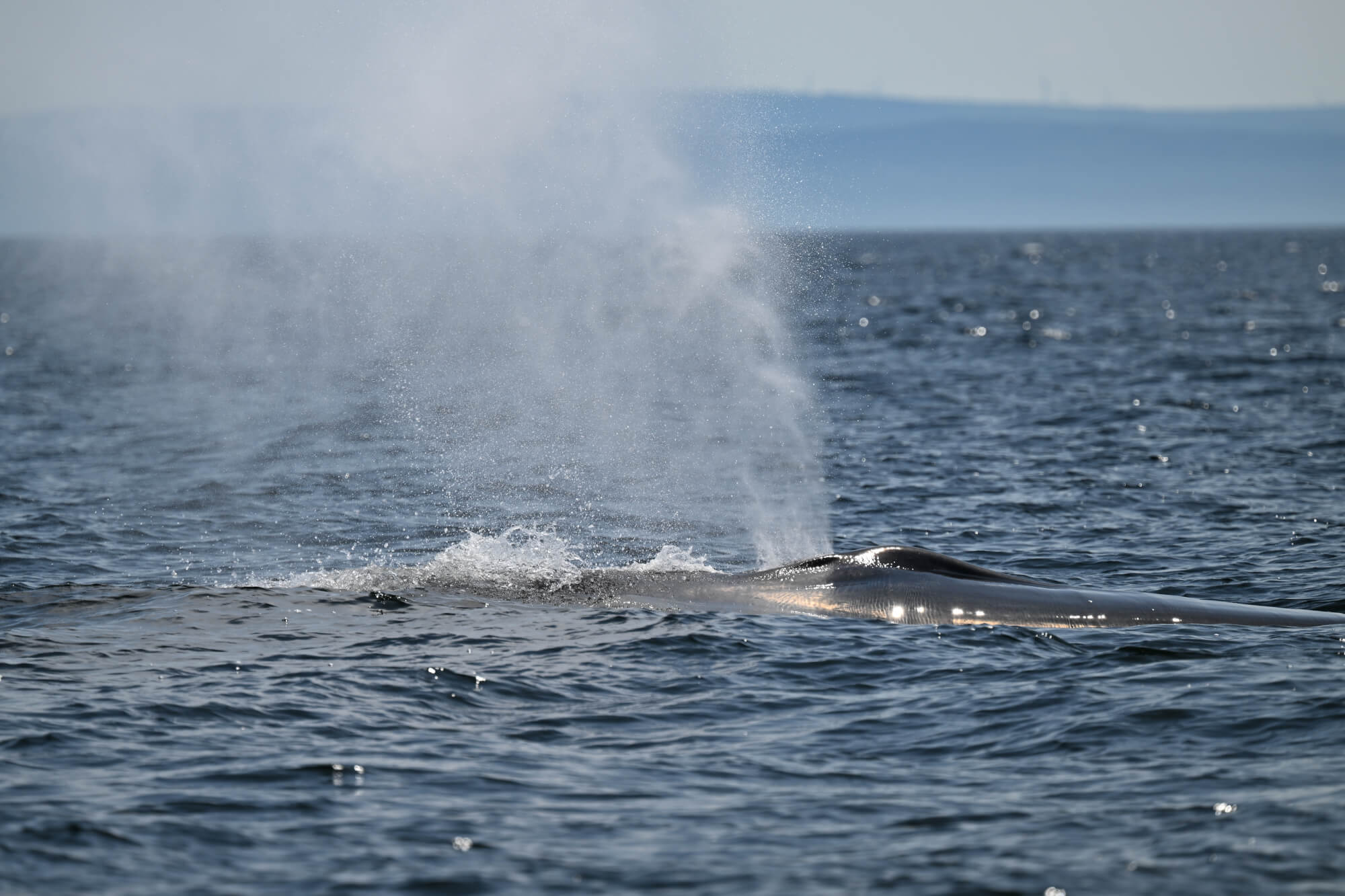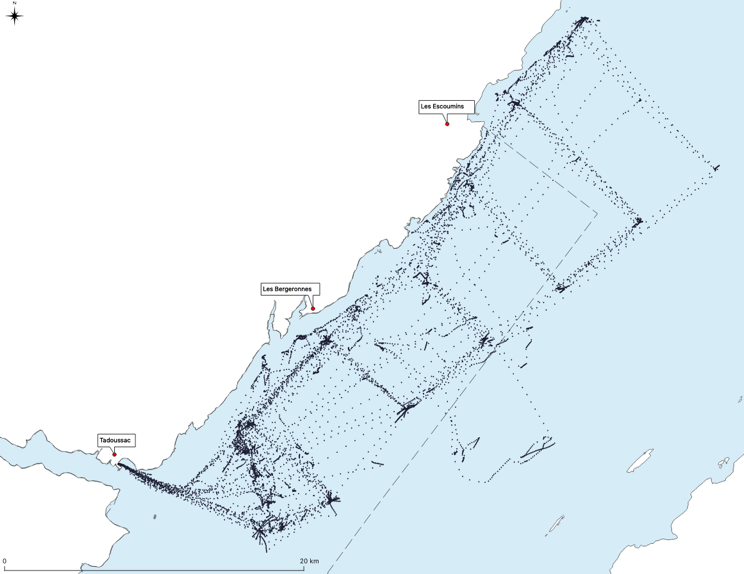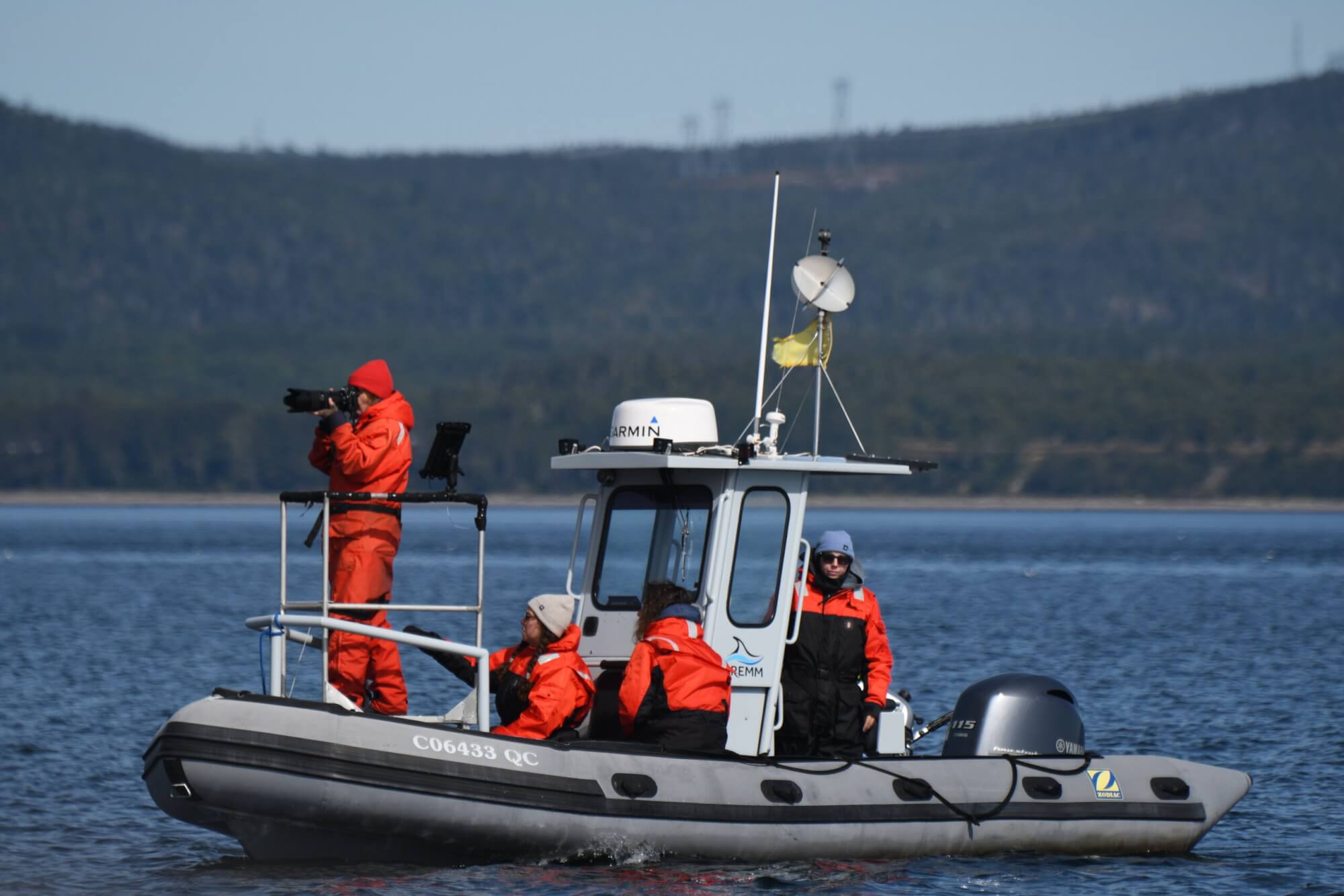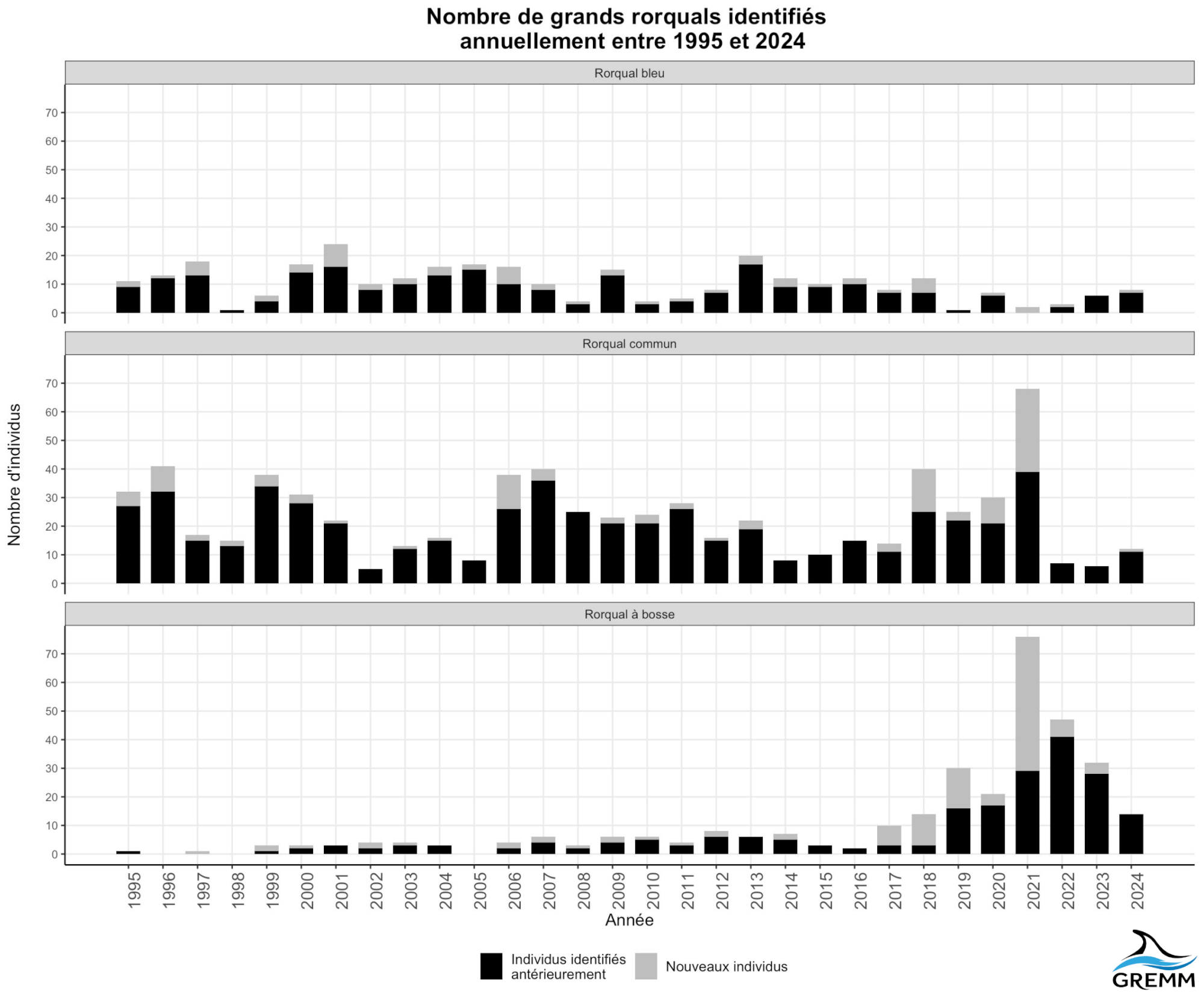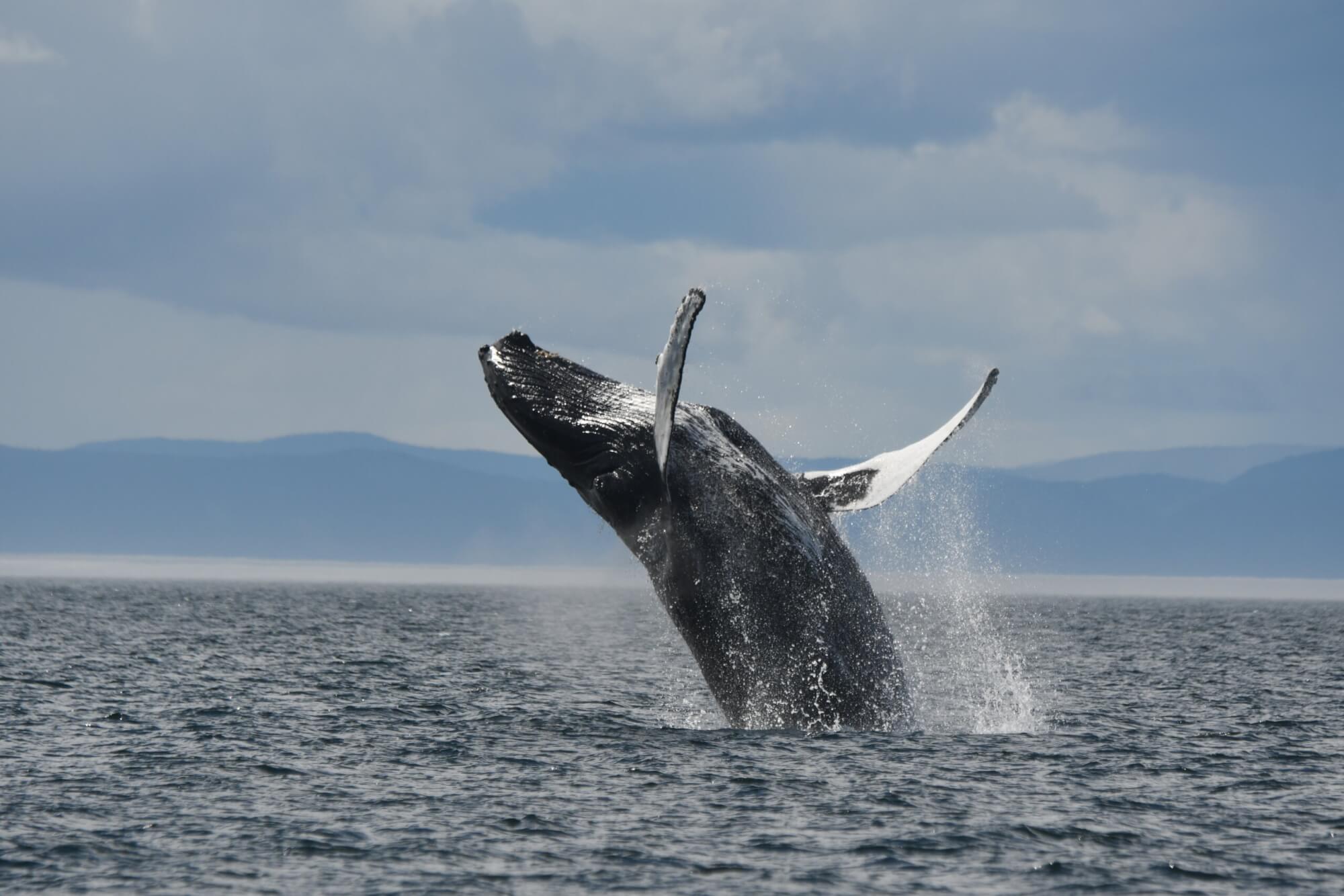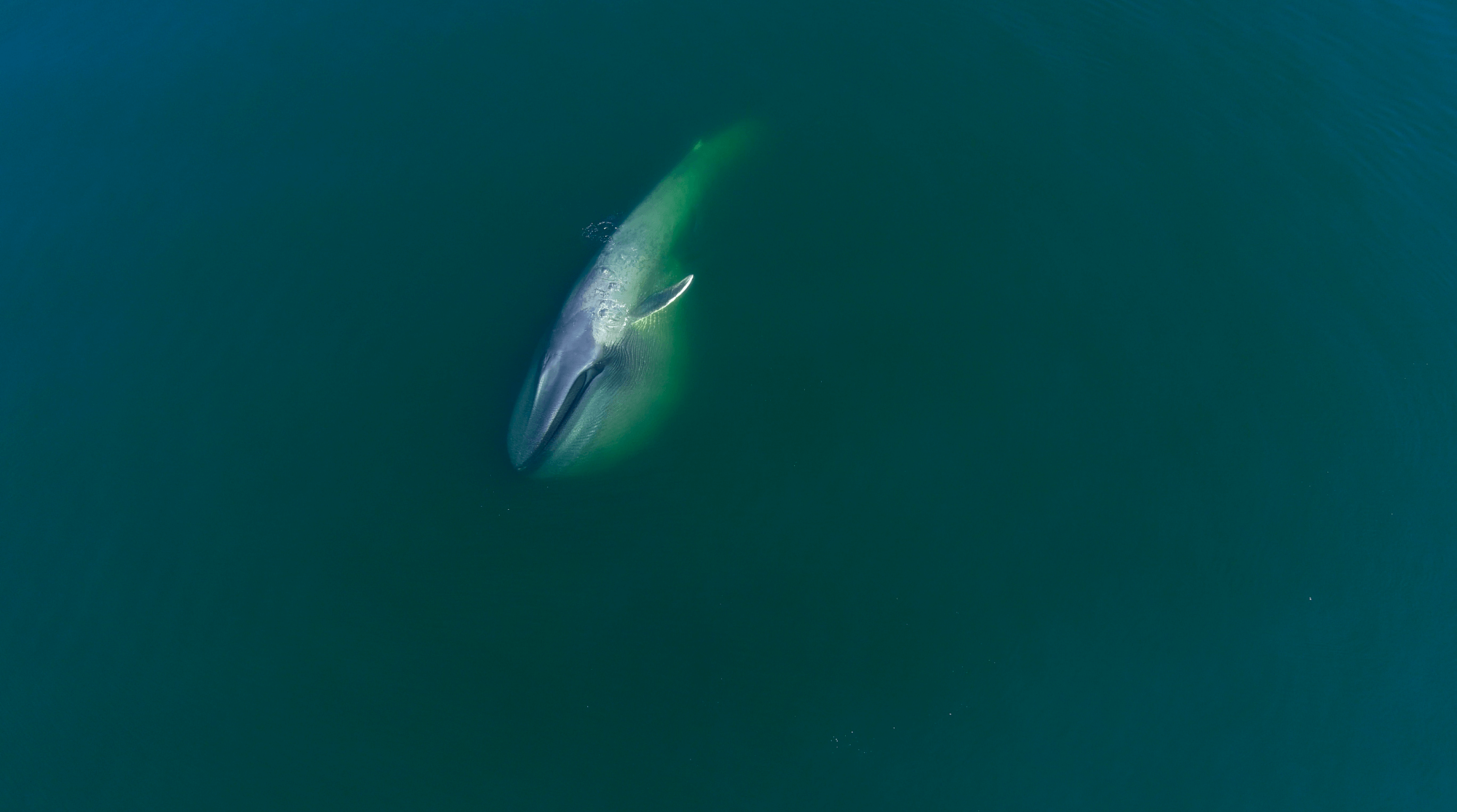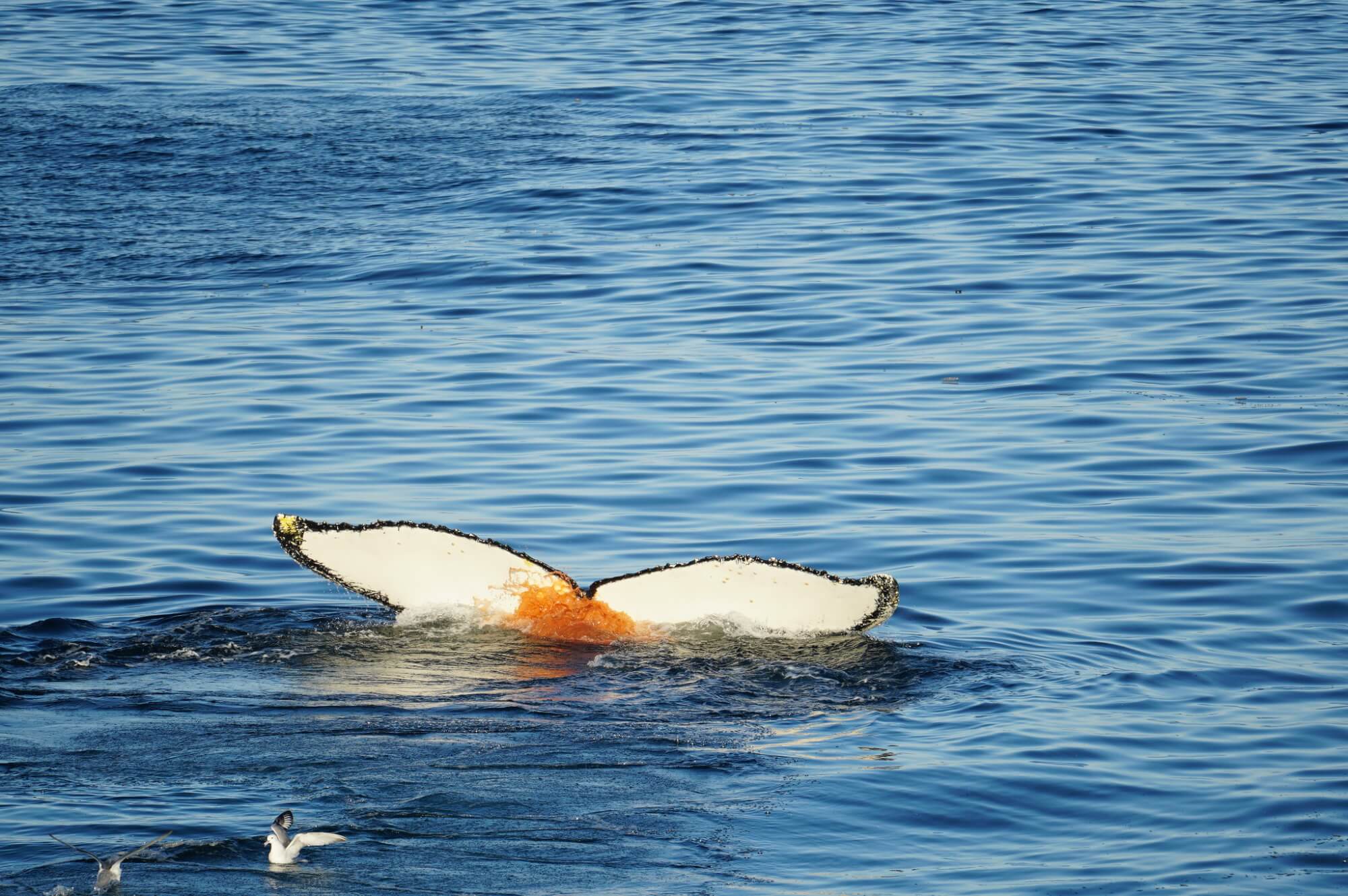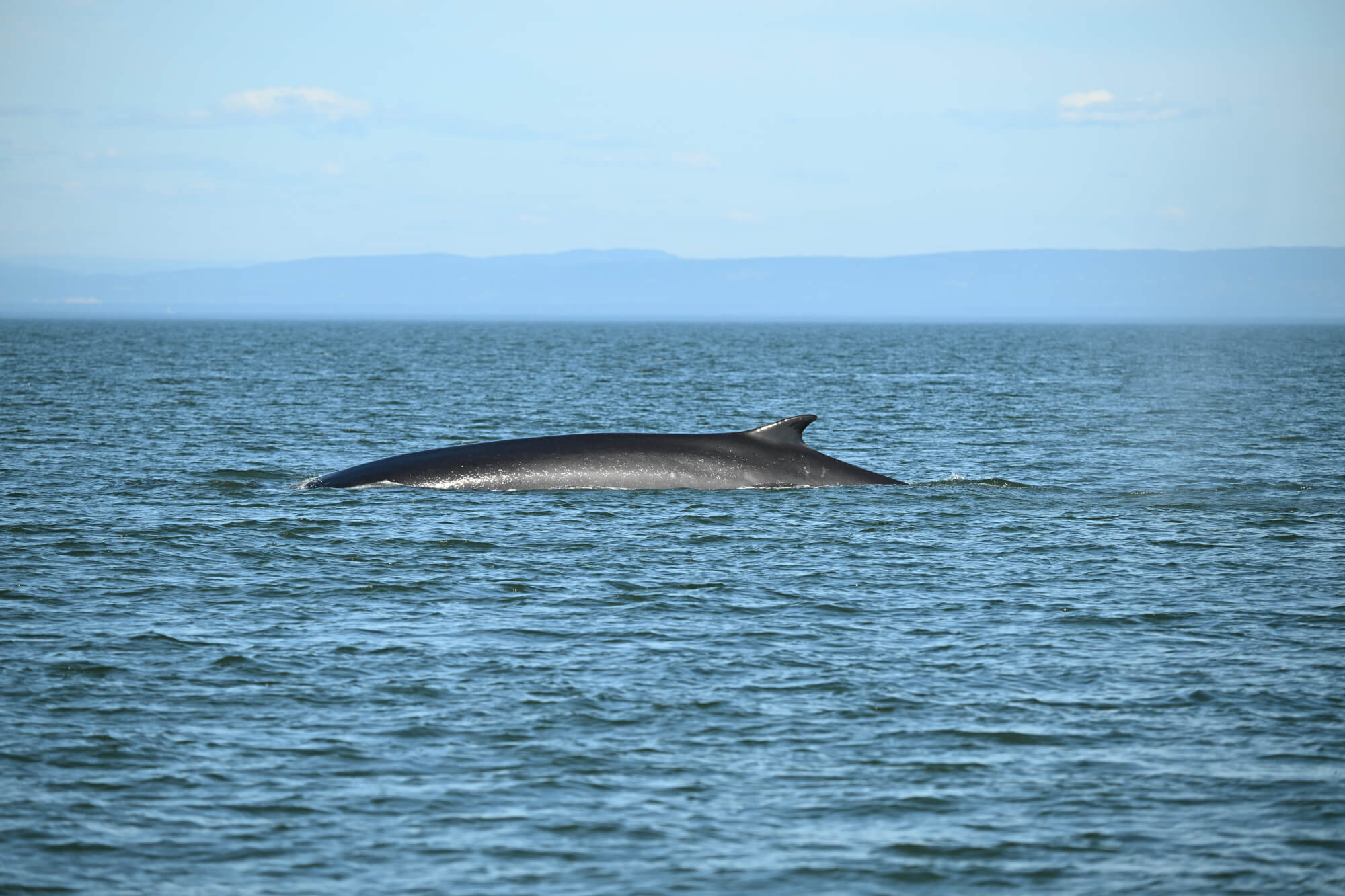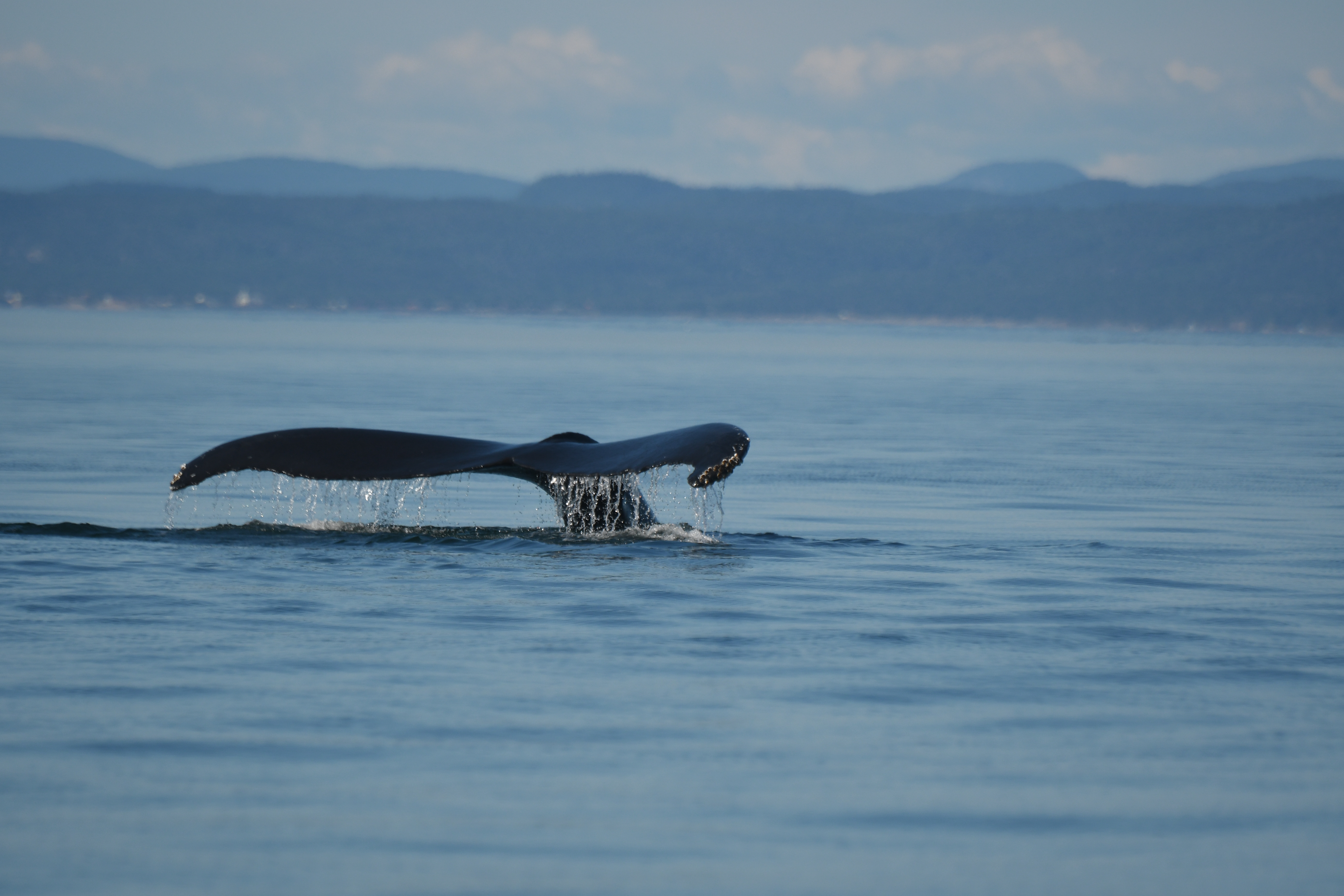Between August 6 and 17, no large rorquals were observed in the Saguenay–St. Lawrence Marine Park. This may not be a first, but it may be one of the longest dry spells without any sightings. From mid-June to mid-September this summer, GREMM’s research team recorded 6 humpback whales, 13 fin whales, and 9 blue whales in the Marine Park. As the 2025 season draws to a close, many are wondering about the number of large whales that have been tallied. Are the numbers lower than what is normally observed in these waters?
To answer this question, the Whales Online team boarded the BpJAM and spoke with Timothée Perrero, who heads GREMM’s Large Rorqual Project.
August 20, 2025: Counting large rorquals aboard the BpJAM
This morning, the Large Rorqual Project team is gathered on the docks of the Tadoussac marina. We slip on our hats, gloves, and Mustangs, the colourful wetsuits so essential to staying comfortable on the water. It’s 7:30 in the morning, and the temperature already suggests it will be a cool day offshore. We are accompanied by Laurence, today’s captain of the BpJAM; Janie, who has been tasked with photo-identification; and Mathieu, who will be operating the drone.
Every week since 1985, from mid-June to late September, GREMM’s research team has repeated this routine. Today, we will sail over 100 km from Tadoussac to Les Escoumins to document the presence (or absence!) of humpback, fin, and blue whales.
Navigating routes called transects, the research team sets up observation stations at various pre-established points. At each station, the team records the weather conditions as well as any watercraft or animals present within a 2,000-metre radius. Anytime the team spots a large rorqual, the crew calmly tries to get closer to take photos. The same applies if the animal is spotted during a transit between two observation stations.
A few hours after setting sail, we spot our first blow. The boat slows down and then comes to a complete stop: It’s time to get out the camera and the drone! While Laurence attempts to position the craft at an optimum angle for photos, Janie prepares the camera, and Mathieu deploys the drone’s arms and small propellers. After a few minutes of waiting, photos are taken. We’ve just re-identified H859! Recognizable by the colour pattern on the underside of its caudal fin as well as the distinctive shape of its dorsal fin, this humpback has been known to GREMM since 2018. During this same outing, the research team also photographed humpback whale H943, who was first documented in 2019.
What these surveys can tell us
The entire collection of images captured during surveys, such as the one we joined on August 20, will be added to GREMM’s catalogue. The latter contains the profiles of 149 humpbacks, 161 fin whales, and 110 blue whales. All of these data allow scientists to piece together the histories, the evolution of markings, and the physical condition of these giants of the sea.
These valuable data are also used to describe large rorqual distribution patterns, including the regularity and duration of their visits, as well as to estimate their abundance.
What about 2025?
This summer (mid-June to mid-September), GREMM’s research team recorded 6 humpback whales, 13 fin whales, and 9 blue whales in the Saguenay–St. Lawrence Marine Park. This is a far cry from the record numbers of 2021, which many remember as a banner year for large rorquals! That was indeed a season like no other, confirms Timothée Perrero. A minimum of 76 humpbacks were observed that year, 47 of which were identified for the very first time with the Marine Park, explains the head of the Large Rorqual Project. Sixty-eight fin whales and two blue whales were also recorded in 2021.
To better gauge the 2025 season, Timothée gives us an overview of the results of the annual censuses carried out between 1995 and 2024.
Large rorqual counts in the Saguenay–St. Lawrence Marine Park area since 1995. © GREMM
Humpback statistics this year are more on par with the numbers observed prior to 2018. “In fact, until 2017, very few individuals were seen in the area,” explains Timothée. 2021 stands out as an atypical year. Although large numbers of humpbacks were also recorded in 2022 and 2023, Timothée points out that their visits were brief. Many of them stayed in the Marine Park for less than a week, which is an indication of exploratory behaviour rather than feeding. On this note, Timothée mentions the concept of “Return upon foraging success” which would imply that the humpbacks seen again in 2022 in the Marine Park had returned after having eaten their fill in its waters the previous year. Several of the new individuals observed in 2021 were featured in Maine’s catalogue of humpback whales, the primary feeding grounds of which did not appear to encompass the St. Lawrence. In 2024, just two of the 47 new individuals from 2021 ventured into the Marine Park. Since this record was set, humpback numbers have been decreasing annually, to the point that they are now approaching pre-2018 figures.
As for fin whales, their distribution pattern appears to fluctuate, with several consecutive peak years followed by years of low numbers. Their abundance in 2025, pegged at around ten individuals, is closer to the figures observed between 2004 and 2007 and again between 2014 and 2017.
Nine blue whales have been identified by GREMM so far this season, slightly higher than the historical average. Although the numbers of blue whales recorded in the Marine Park are usually lower than those of their fin whale cousins, they also show significant variation. Amongst other things, Timothée points out that peaks in the presence of blue whales tend to coincide with troughs for fin whales.
How can we explain these significant interannual variations?
GREMM’s censuses do not include minke whales or grey seals, whose scarcity has been noted by a number of observers this summer. While the time series collected by the Large Rorqual Project clearly show significant interannual variations in the presence of the large whale species that visit the Marine Park, we must dig deeper to try to understand what these occasionally extreme fluctuations are attributable to.
Could the abundance of food in the Marine Park, or a lack of food elsewhere in the estuary or gulf, be responsible for these variations? This is likely the case, argues Samuel Turgeon, ecologist and head of pelagic prey and predator monitoring at Parks Canada. Amongst other things, Samuel recalls that during the 2021 censuses, a season during which a record number of large whales was observed in the Marine Park, his team noted an abundance of schooling fish.
To learn more, our team boarded Parks Canada’s vessel L’Alliance to participate in one of these monitoring missions. We also spoke at length with Samuel Turgeon. Stay tuned for the second part of this report!


